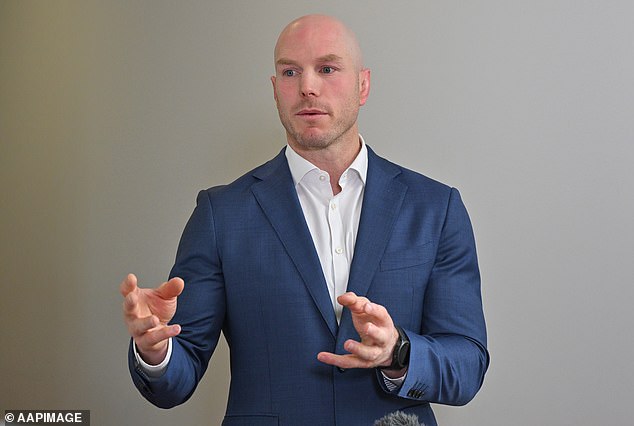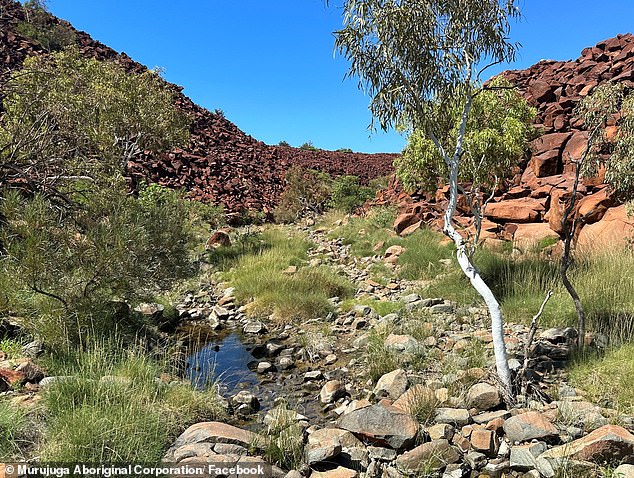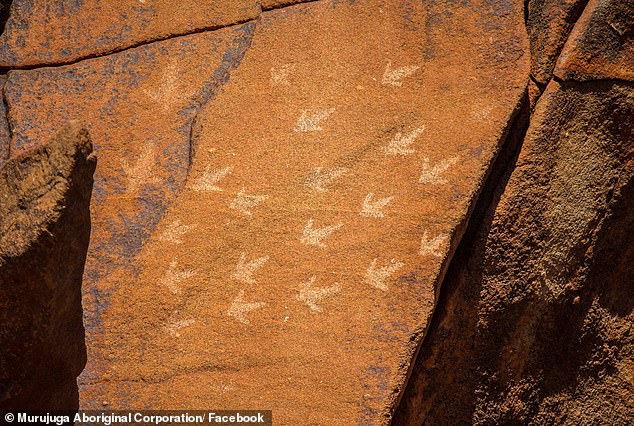A former Aboriginal corporation employee has claimed the World Heritage listing process for an ancient rock art site in outback Australia is being mismanaged.
The former employee of the Murujuga Aboriginal Corporation in WA said a program to monitor emissions from nearby industrial and mining sites, which is key to the site’s attempt to gain UNESCO listing, was not being carried out appropriately. proper “diligence.”
Murujuga in the Pilbara, WA, is home to more than 1 million rock art petroglyphs across 37 hectares, with giant miners such as Woodside and Rio Tinto operating in the same area, sometimes just meters from the artworks.
The former employee’s letter, written last July, was leaked by a whistleblower and tabled by Senator David Pocock during an estimates committee session in federal parliament this week.
The employee said the project was not being carried out with “sufficient integrity, diligence or governance” and that traditional owners were not involved in heritage audits or studies. WAToday reported.
The WA government has been monitoring emissions from local industrial plants and their potential impact on rock art since 2022.
An employee of the Murujuga Aboriginal Corporation in WA warned board members that traditional owners were being suspended from a key monitoring program for the bid to include the world’s largest and oldest rock art gallery (pictured) on the World Heritage List.

The letter, written last July, was leaked by a whistleblower and presented by Senator David Pocock (pictured) during an estimates committee session in federal parliament.
The former employee also criticized the monitoring program, stating that the precautionary principle was not followed in making decisions when the science is unclear.
“Currently, Murujuga Aboriginal Corporation is not in a position to verify the quality of raw sample data due to lack of access, questionable sampling practices and inadequate transfer of skills to (its) rangers,” the letter said.
‘Due to these flaws and disconnections, there is a loss of traction on the objectives (of the rock art strategy) to achieve the best (or any reliable) global standard of monitoring and managing the severity of the threat posed by… emissions into the air. ‘
The lack of due diligence, withheld information and lack of cooperation from contractors raised the issue of a “possible failure of the contract”, the letter said, undermining the purpose of the rock art strategy and monitoring programme.
Monitoring is a key part of the federal government’s application to UNESCO to make the site a World Heritage Site.
WA’s Department of Water and Environmental Regulation controls the monitoring program but has outsourced it to mining and environmental services firm Caliber.
Caliber then outsourced it to Curtin University, with Murujuga Aboriginal Corporation taking over in 2026.
But the former corporation employee said the university sent a “contractor to Murujuga who demonstrated low capacity and made a major error regarding sample collection and sample processing protocol.”
But the department, the Aboriginal corporation and the university disagreed with the former employee’s claims.
“The claims made in the submitted documents do not stand up to scrutiny,” Murujuga Aboriginal Corporation chief executive Kim Wood told WAToday.
“The Murujuga rock art monitoring program is a robust, best-practice program that has been designed with international experts to examine the impact of industrial emissions on the Murujuga petroglyphs.”

Murujuga (pictured) in the Pilbara, WA, is home to more than 1 million rock art petroglyphs across 37 hectares, with giant miners such as Woodside and Rio Tinto operating in the same area, sometimes just meters from the artworks .
A department spokesperson said the whistleblower’s claims were incorrect.
“Every aspect of the monitoring program is respectfully designed and informed by the laws, knowledge and cultural practices of the traditional owners and custodians of Murujuga, guided by the Circle of Elders,” the spokesperson said.
“The state government has committed to making the results of the monitoring program public, following independent peer review and validation of the data.”
Members of the International Council on Monuments and Sites will visit Murujuga as part of the World Heritage process and a decision is expected next year.

